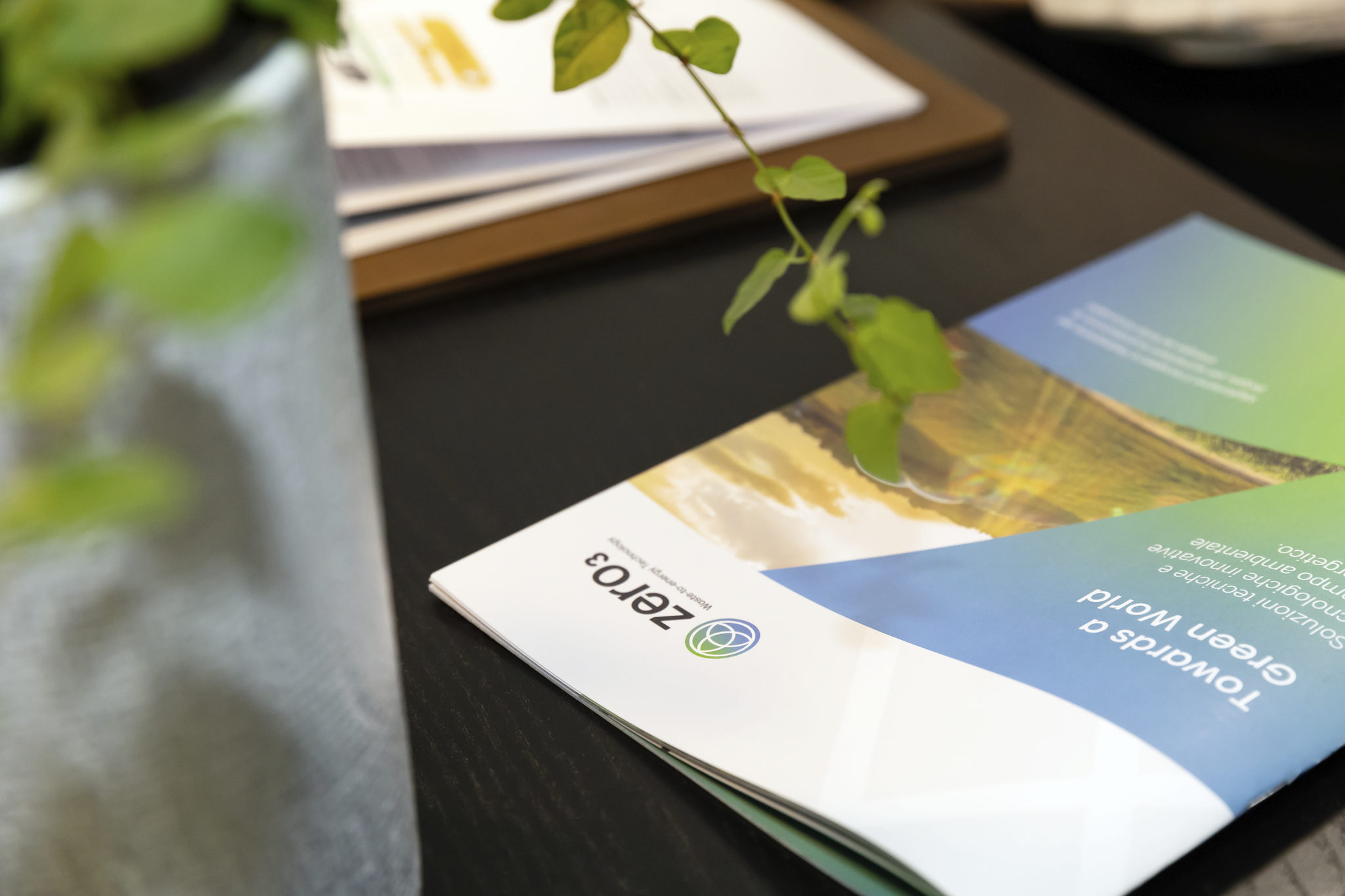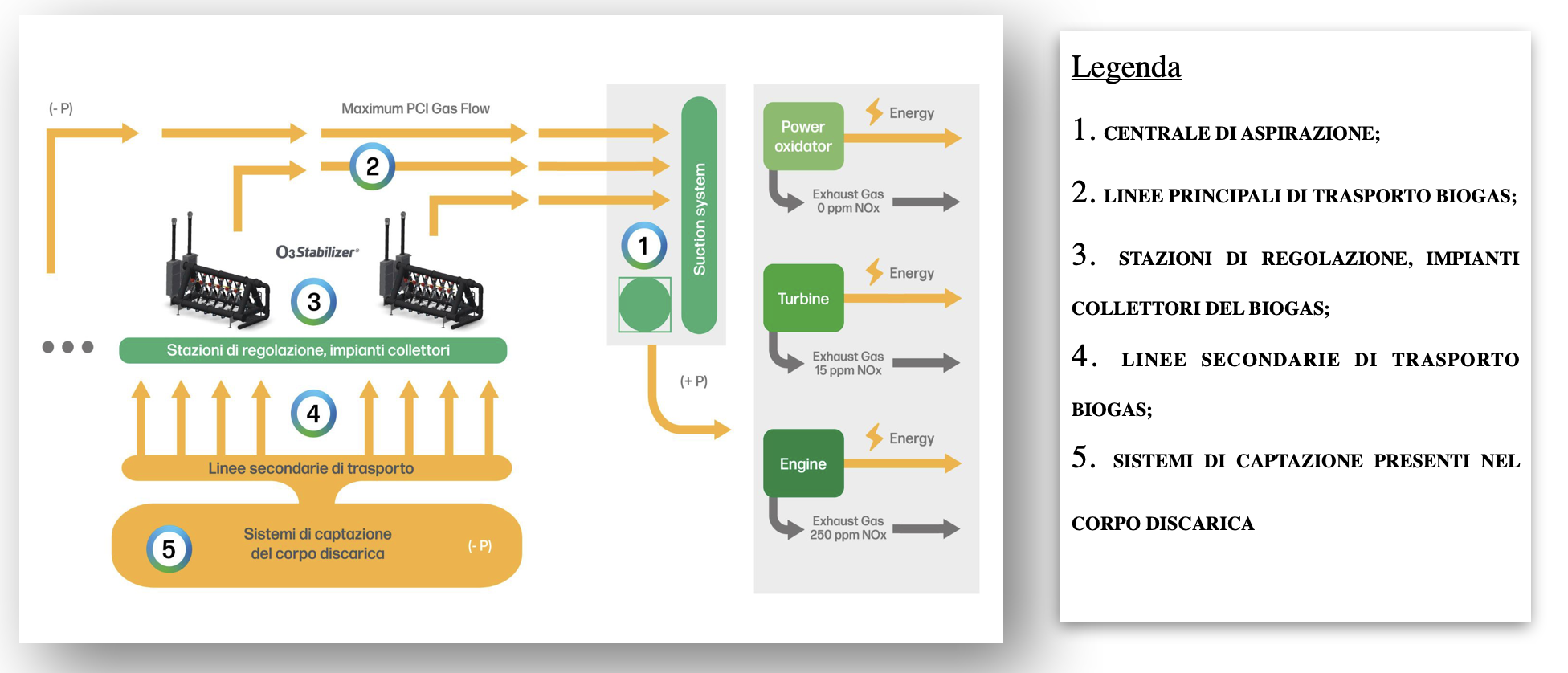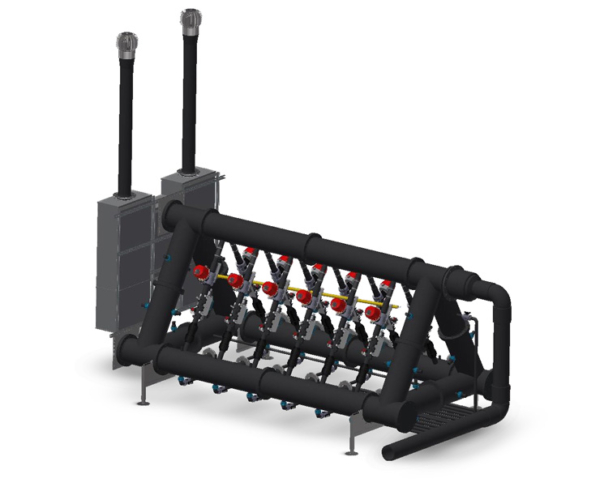
The so-called “bad smell” of the landfill comes from leachates but above all from biogases generated by the natural processes of degradation and decomposition of waste.
The decomposition of waste in landfill occurs through different processes that present various and complex aspects on which we will not dwell. Let us just remember that the technical literature reports an interesting factor, namely that the biogasification process in landfill, once started, is demonstrated for several years: over 30.
In fact, there are various types of “biogas” because the components that constitute it have variable volumetric incidences.
The main macrocomponents of biogas are methane (CH4) and carbon dioxide (CO2), both important greenhouse gases that contribute to the intensification of the greenhouse effect.
In particular, the emission of methane CH4 into the atmosphere is characterized by a Global Warming Potential (GWP) equal to:
-
27.9 times that of carbon dioxide CO2 over a 100-year time horizon
-
81.2 times that of carbon dioxide CO2 over a 20-year time horizon
as reported in the sixth and final IPPC assessment report published on 9 August 2021 and called AR6.
Then there are a certain number of microcomponents (H₂O, H₂S, NH₂, CO₂, etc.) which, although with a lower incidence, give biogas peculiar characteristics such as odor. So, what are the odorous microcomponents of biogas?
This depends on many concomitant factors that contribute to the degradation and decomposition of waste (for example, the chemical and commodity composition of the waste, the arrangement and adjacency, as well as the anisotropy of the discharge, the temperature, the presence or absence of oxygen and humidity, pressure, etc.). Among the most relevant odorous microcomponents are:
-
H₂S, also called hydrogen sulfide
-
aldehydes and in particular formaldehyde CH₂O
-
ammonia NH₂
-
alkanes such as pentane C₂H₂ and hexane C₂H₂
-
alkenes
-
cycloalkanes and cycloalkenes
-
aromatic hydrocarbons
-
amines
-
halogenated compounds
-
organosulfur compounds
-
alcohols
-
esters
-
etc…
Unpleasant odor emissions from landfill waste management activities represent a difficult situation that involves many people and has a significant impact on the quality of life of those exposed to it. The assessment of the legitimacy of odor emissions is an extremely complex factor that involves tolerability criteria and subjective sensation/perception of bad odor, as well as health, safety and environmental protection criteria.
In recent years, some solutions have been developed and adopted to significantly improve the collection efficiency of traditional systems usually used in landfills and among these solutions we highlight GAS STABILIZER, an innovative system patented at international level that acts as the mind/brain of the entire collection system present in the landfill.
GAS STABILIZER is the innovative technology of ZERO3 that realizes the automation of landfill biogas collection in response to the indications of the UNI/TR 11917:2023 standard.
Landfills that have installed GAS STABILIZER have achieved excellent results both in terms of increased volumes of biogas captured and in terms of reduction of odors and greenhouse gas emissions.
GAS STABILIZER can be installed throughout the landfill, even near the waste discharge front, where odorous emissions begin to be significant.
Compared to traditional systems, it is positioned between the manual regulation stations (element 3) and the secondary biogas transport lines (element 4) and can be applied both in new capture plants and in existing plants.

The innovative GAS STABILIZER technology has shown that today it is possible to improve the efficiency of traditional collection systems usually installed in landfills, increase the quantities of biogas collected and therefore limit the climate impact and reduce to zero odorous and greenhouse gas emissions.
Let’s not forget that biogas is a resource that, if sent for energy recovery, produces energy from renewable sources (EU Directive 2018/2001 – art. 2, point 1).
What managers who use GAS STABILIZER say ↓
https://www.zero3.cloud/
https://www.zero3.cloud/la-

Gas Stabilizer
Innovative system for the automation of biogas collection that optimizes the performance of traditional collection systems by increasing extraction efficiency.
• It allows continuous and remote monitoring and control, in real time, for each collection line
• It is modular, decomposable and can be applied to any type of biogas collection system, both new and existing.


